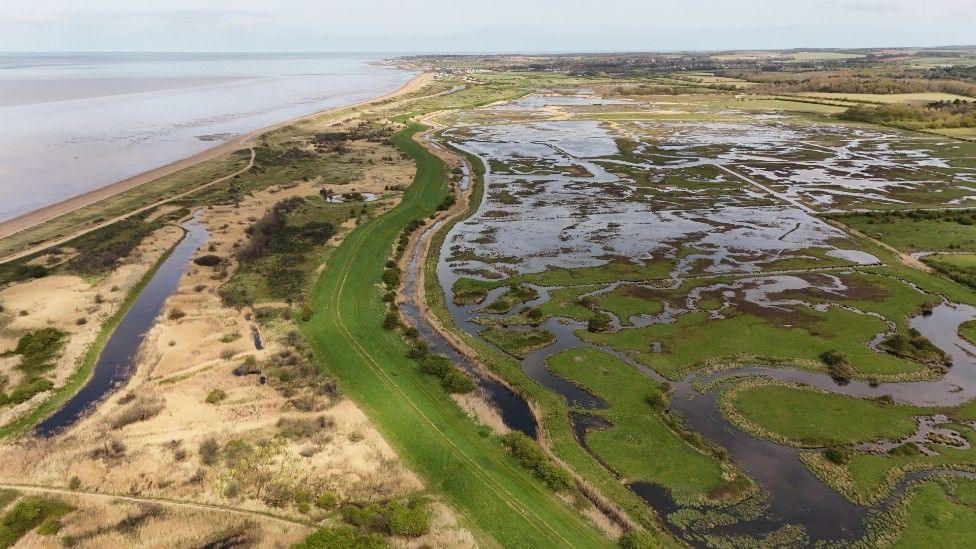Ringed plover breeding project sees numbers rise
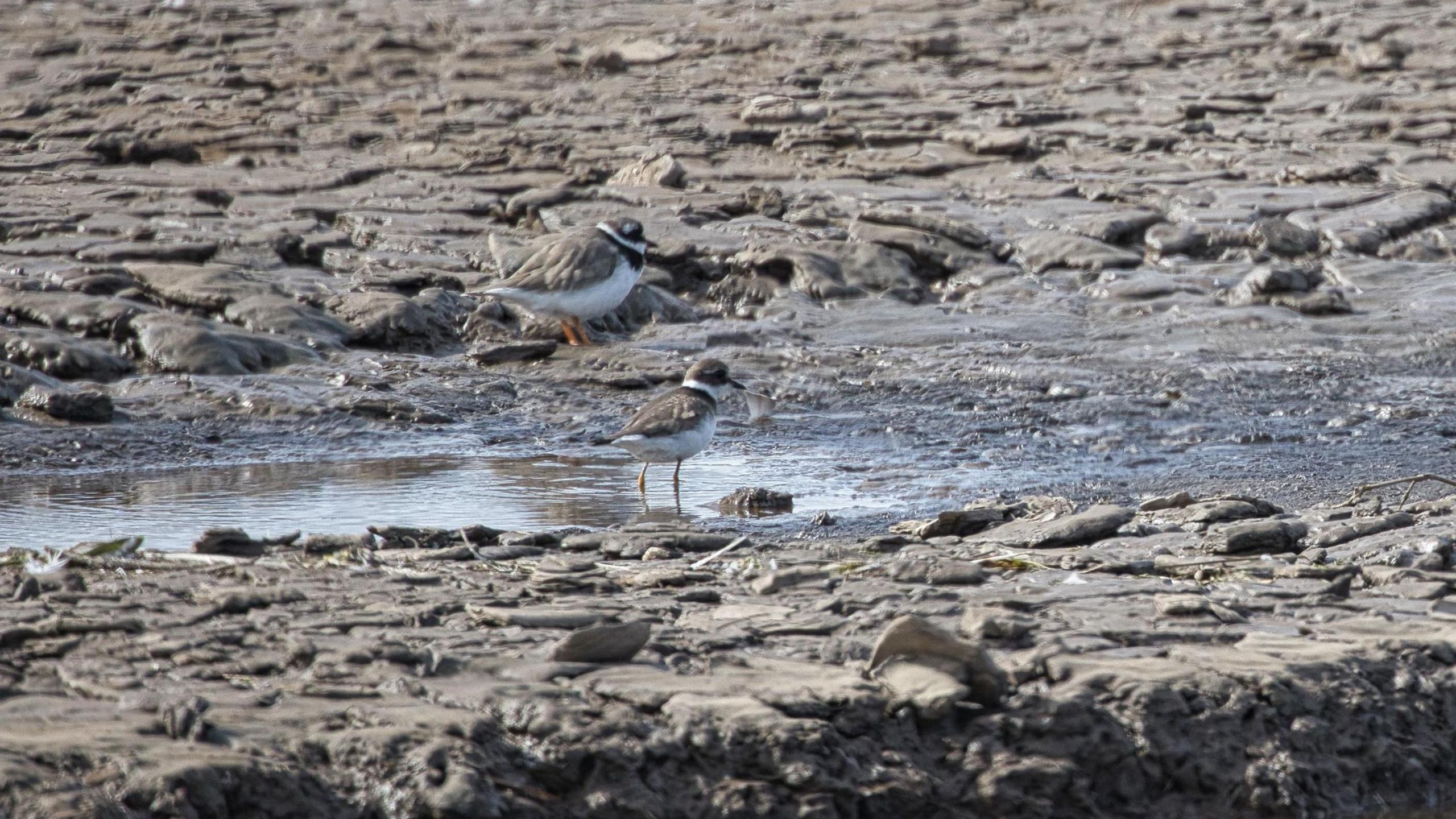
Ringed plover chick numbers had been at extinction levels until the introduction of a breeding programme
- Published
A project to increase the number of plover birds has been hailed a success.
The Royal Society for the Protection of Birds (RSPB) said chick numbers had increased after efforts by volunteers to keep visitors and dogs away from coastal nests at Snettisham, Norfolk.
The ringed plover, with its black eye mask and distinctive orange and black-tipped bills, were red-listed by the bird charity, after their breeding populations suffered declines of greater than 50%.
Three years ago, 40 pairs of birds fledged 19 chicks, rising to 71 this year after funding from the Borough Council of King's Lynn and West Norfolk, and nature reserve Wild Ken Hill.

Conservationist Wynona Lynn said the success of the Plovers in Peril programme had given the project hope
The wading birds tend to breed on sand, shingle and mudflats on the ground, according to RSPB ringed plover project officer Wynona Legg.
"Their eggs are incredibly camouflaged and incredibly beautiful, and they're very, very, clever little birds," she said.
"For a species that struggles to thrive alongside us on busy beaches, it's just an enormous amount of hope that it gives us to go forward."
BBC Springwatch and Autumnwatch has recently been based at Wild Ken Hill, and the area was also hit by flash fires during the hot summer of 2002.
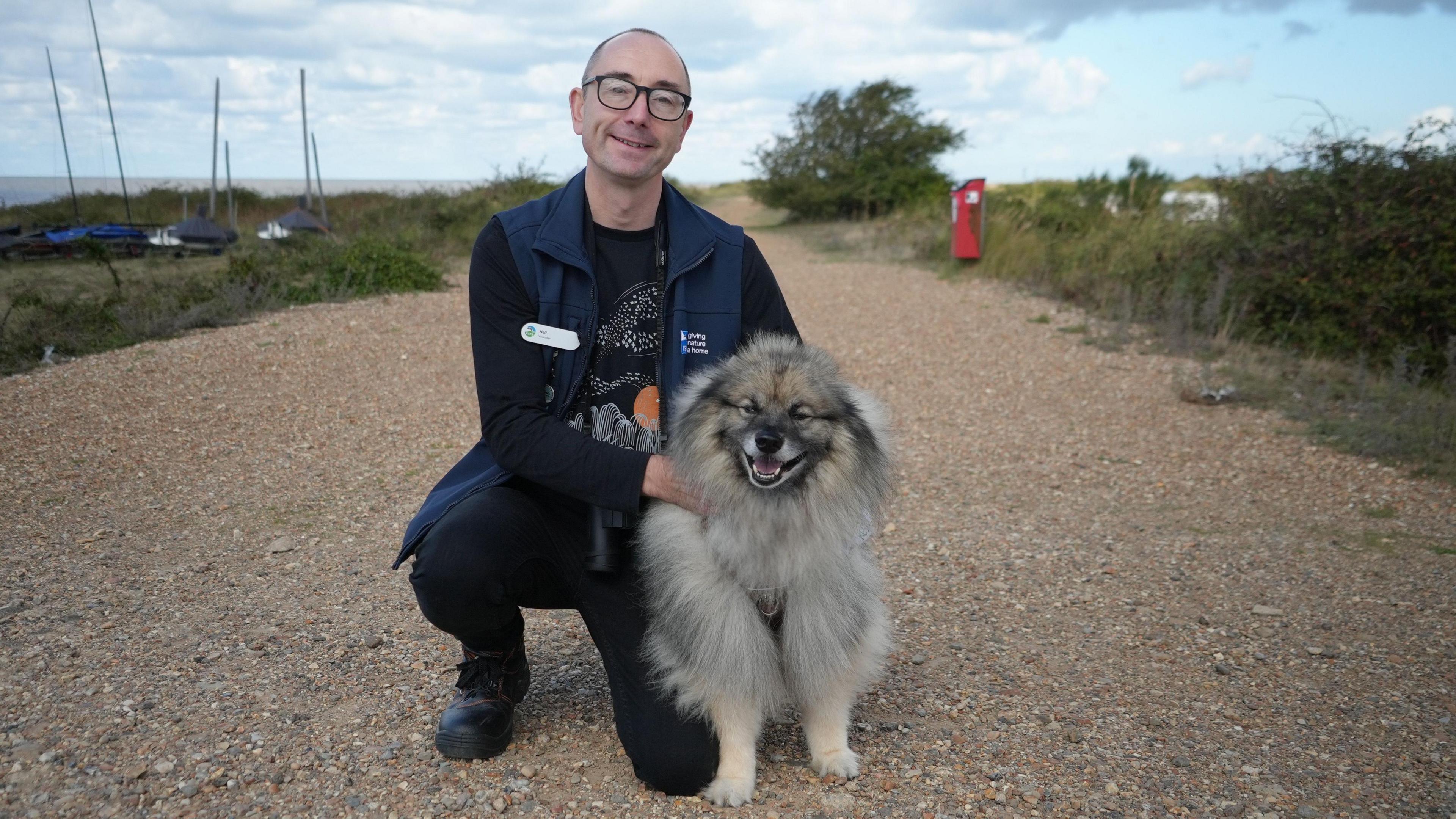
Ranger Neil Senior advises people how to spot the birds and encourages them to keep dogs on leads
Volunteers, like beach ranger Neil Senior, help to keep people and pets away from the chicks, which are difficult to see against their environment.
"People visit this wonderful area and they don't always know what's here," he said.
"And when you show them, they say 'oh wow, this is amazing'."
Snettisham Beach Sailing Club is located in the middle of the plovers' nesting site, an area of special scientific interest, a RAMSAR, external wetland site of international importance, as well as being in the middle of an RSPB reserve.
The sailing club's commodore Adrian Tebbutt said it was possible to live side by side with wildlife.
"Our members have really taken it on board and have taken to the fact that the ringed plovers are ours and we want to look after them," he said.
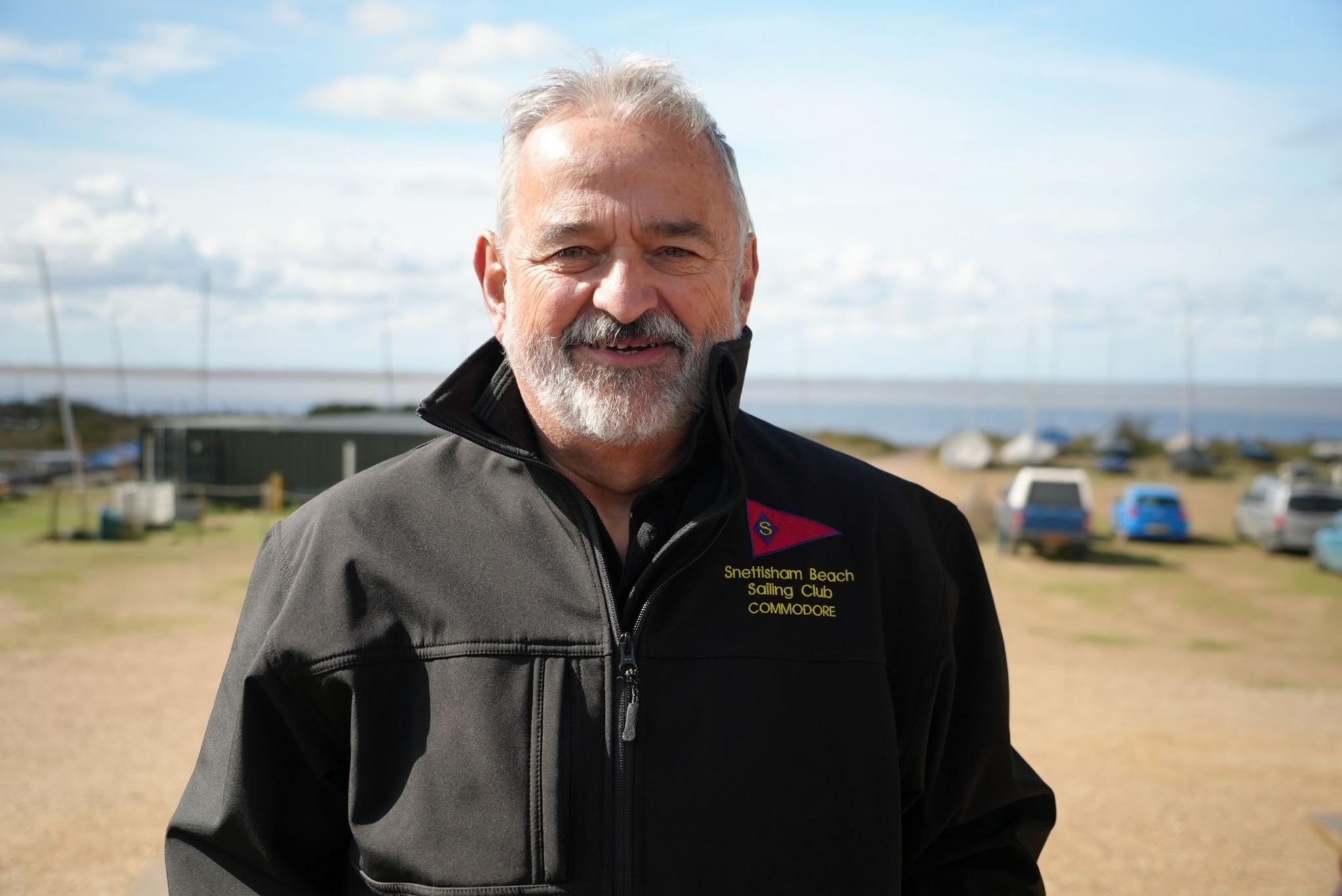
Adrian Tebbutt of Snettisham Sailing Club, which is in the middle of the plovers' nesting ground, said it was possible for man and bird to share the same space
The rapid decline in numbers of ringed plovers was put down to a rise in tourists, a loss of habitat and climate change.
RSPB Snettisham site manager Jim Scott said: "It's absolutely fantastic to see this increase and it makes you feel like you're actually doing something worthwhile, helping this bird species to maintain its existence in this part of the coastline, and hopefully well into the future."

Jim Scott said the plovers had had their best breeding season in four years
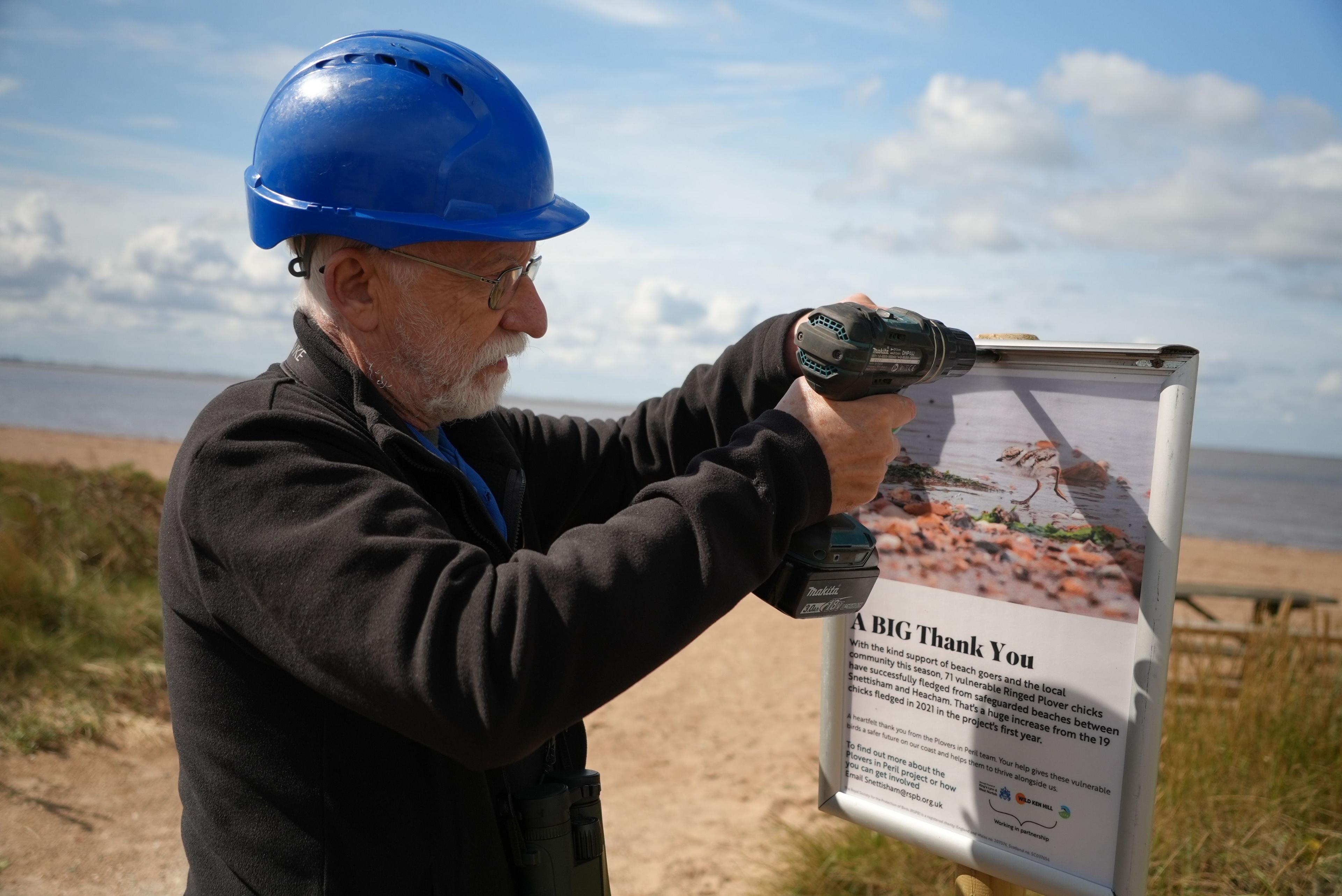
The RSPB has put up posters thanking the public for complying with advice to help the plovers breed
A project to increase the number of plover birds has been hailed a success
Get in touch
Do you have a story suggestion for Norfolk?
Follow Norfolk news on BBC Sounds, Facebook, external, Instagram, external and X, external.
- Published5 August 2024
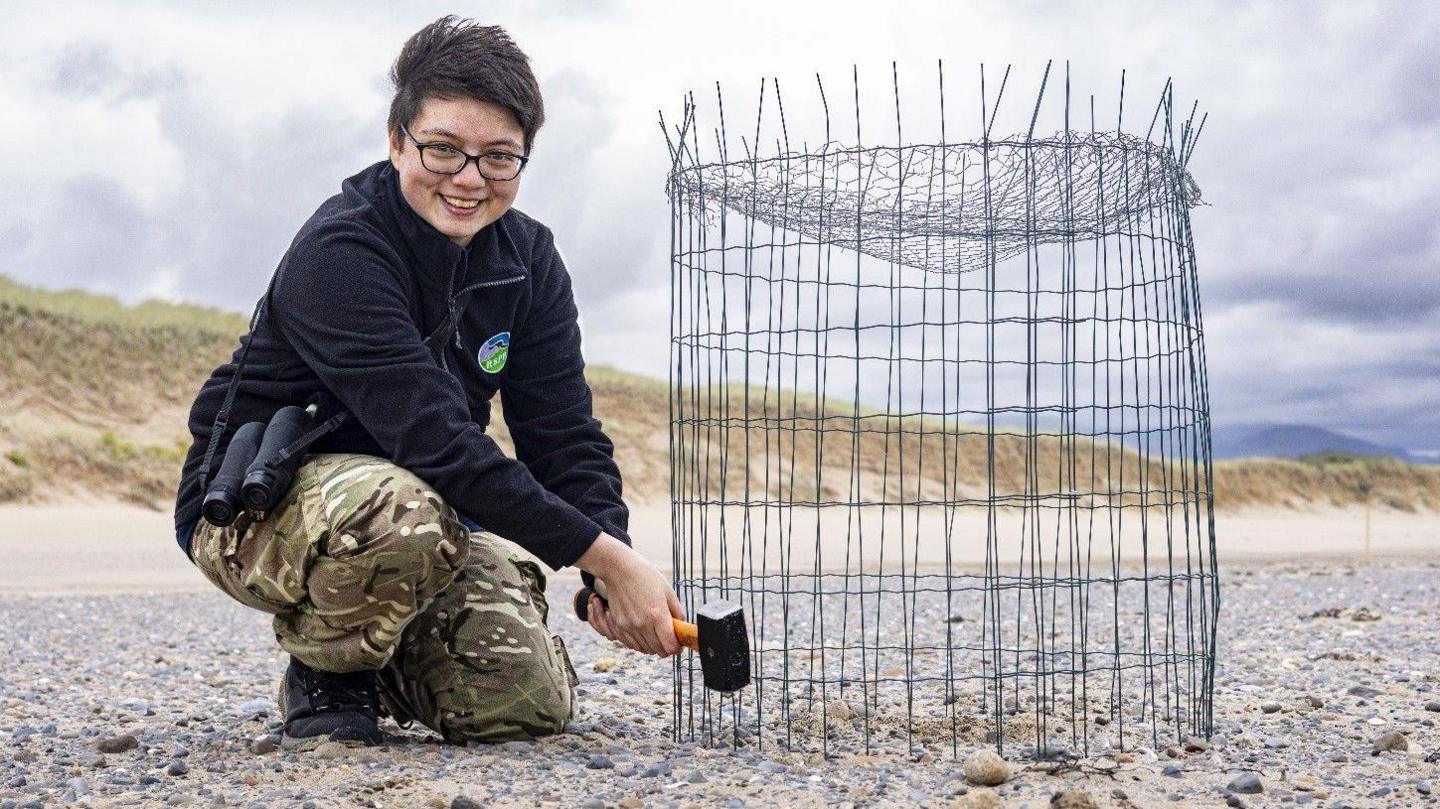
- Published11 April 2024
